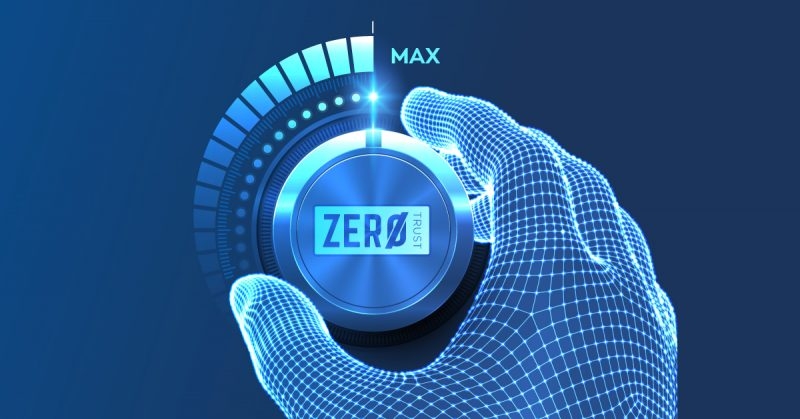Zero-Trust Security: A Strategic Approach
Zero-trust security is an advanced security model based on the principle of "never trust, always verify." Unlike traditional security models that assume anything inside the corporate network can be trusted, zero-trust assumes that threats can exist both inside and outside the network. It requires strict identity verification for every person and device attempting to access resources on a private network, regardless of whether they are inside or outside the network perimeter.
At the heart of zero-trust security is the notion of continuous verification. Every access request is thoroughly vetted, ensuring that the requesting entity has the appropriate permissions and is not exhibiting any suspicious behaviour. This involves the use of multi-factor authentication (MFA), identity and access management (IAM), and device posture checks. These measures ensure that only legitimate users and devices can access sensitive data, thereby reducing the risk of breaches caused by compromised credentials or malicious insiders.
Zero-trust security also emphasizes the principle of least privilege. This means that users and devices are granted the minimum level of access necessary to perform their functions. By limiting access rights, zero-trust reduces the attack surface and minimizes the potential damage that could be inflicted by a compromised account or device. This granular access control is enforced through policies that dynamically adjust based on the context of the access request, such as the user's location, the device being used, and the sensitivity of the data being accessed.
One of the key challenges in implementing zero-trust security is the need for comprehensive visibility into all network activities. Organizations must continuously monitor and analyze network traffic to detect and respond to potential threats in real-time. This requires the integration of advanced security tools, such as Security Information and Event Management (SIEM) systems, endpoint detection and response (EDR) solutions, and network traffic analysis (NTA) tools. These tools provide the necessary insights to enforce zero-trust policies and respond swiftly to any anomalous activities.
The future of zero-trust security looks promising, with advancements in artificial intelligence (AI) and machine learning (ML) playing a significant role in enhancing its capabilities. AI and ML can help automate the detection of threats, enabling faster and more accurate responses. Additionally, as organizations increasingly adopt cloud services and remote work, the importance of zero-trust security will continue to grow. By providing a robust framework for securing access to sensitive data and applications, zero-trust security is set to become an essential component of modern cybersecurity strategies.
In conclusion, zero-trust security represents a paradigm shift in how organizations approach cybersecurity. By assuming that threats can exist anywhere and continuously verifying every access request, zero-trust provides a more resilient defense against modern cyber threats. While the implementation of zero-trust security can be challenging, the benefits of reduced attack surfaces, minimized risk of breaches, and enhanced protection of sensitive data make it a vital strategy for safeguarding today's digital environments. As technology evolves, the principles of zero-trust security will continue to adapt and strengthen, ensuring robust protection against ever-evolving cyber threats.
https://www.marketdigits.com/zero-trust-security-market
Zero-trust security is an advanced security model based on the principle of "never trust, always verify." Unlike traditional security models that assume anything inside the corporate network can be trusted, zero-trust assumes that threats can exist both inside and outside the network. It requires strict identity verification for every person and device attempting to access resources on a private network, regardless of whether they are inside or outside the network perimeter.
At the heart of zero-trust security is the notion of continuous verification. Every access request is thoroughly vetted, ensuring that the requesting entity has the appropriate permissions and is not exhibiting any suspicious behaviour. This involves the use of multi-factor authentication (MFA), identity and access management (IAM), and device posture checks. These measures ensure that only legitimate users and devices can access sensitive data, thereby reducing the risk of breaches caused by compromised credentials or malicious insiders.
Zero-trust security also emphasizes the principle of least privilege. This means that users and devices are granted the minimum level of access necessary to perform their functions. By limiting access rights, zero-trust reduces the attack surface and minimizes the potential damage that could be inflicted by a compromised account or device. This granular access control is enforced through policies that dynamically adjust based on the context of the access request, such as the user's location, the device being used, and the sensitivity of the data being accessed.
One of the key challenges in implementing zero-trust security is the need for comprehensive visibility into all network activities. Organizations must continuously monitor and analyze network traffic to detect and respond to potential threats in real-time. This requires the integration of advanced security tools, such as Security Information and Event Management (SIEM) systems, endpoint detection and response (EDR) solutions, and network traffic analysis (NTA) tools. These tools provide the necessary insights to enforce zero-trust policies and respond swiftly to any anomalous activities.
The future of zero-trust security looks promising, with advancements in artificial intelligence (AI) and machine learning (ML) playing a significant role in enhancing its capabilities. AI and ML can help automate the detection of threats, enabling faster and more accurate responses. Additionally, as organizations increasingly adopt cloud services and remote work, the importance of zero-trust security will continue to grow. By providing a robust framework for securing access to sensitive data and applications, zero-trust security is set to become an essential component of modern cybersecurity strategies.
In conclusion, zero-trust security represents a paradigm shift in how organizations approach cybersecurity. By assuming that threats can exist anywhere and continuously verifying every access request, zero-trust provides a more resilient defense against modern cyber threats. While the implementation of zero-trust security can be challenging, the benefits of reduced attack surfaces, minimized risk of breaches, and enhanced protection of sensitive data make it a vital strategy for safeguarding today's digital environments. As technology evolves, the principles of zero-trust security will continue to adapt and strengthen, ensuring robust protection against ever-evolving cyber threats.
https://www.marketdigits.com/zero-trust-security-market
Zero-Trust Security: A Strategic Approach
Zero-trust security is an advanced security model based on the principle of "never trust, always verify." Unlike traditional security models that assume anything inside the corporate network can be trusted, zero-trust assumes that threats can exist both inside and outside the network. It requires strict identity verification for every person and device attempting to access resources on a private network, regardless of whether they are inside or outside the network perimeter.
At the heart of zero-trust security is the notion of continuous verification. Every access request is thoroughly vetted, ensuring that the requesting entity has the appropriate permissions and is not exhibiting any suspicious behaviour. This involves the use of multi-factor authentication (MFA), identity and access management (IAM), and device posture checks. These measures ensure that only legitimate users and devices can access sensitive data, thereby reducing the risk of breaches caused by compromised credentials or malicious insiders.
Zero-trust security also emphasizes the principle of least privilege. This means that users and devices are granted the minimum level of access necessary to perform their functions. By limiting access rights, zero-trust reduces the attack surface and minimizes the potential damage that could be inflicted by a compromised account or device. This granular access control is enforced through policies that dynamically adjust based on the context of the access request, such as the user's location, the device being used, and the sensitivity of the data being accessed.
One of the key challenges in implementing zero-trust security is the need for comprehensive visibility into all network activities. Organizations must continuously monitor and analyze network traffic to detect and respond to potential threats in real-time. This requires the integration of advanced security tools, such as Security Information and Event Management (SIEM) systems, endpoint detection and response (EDR) solutions, and network traffic analysis (NTA) tools. These tools provide the necessary insights to enforce zero-trust policies and respond swiftly to any anomalous activities.
The future of zero-trust security looks promising, with advancements in artificial intelligence (AI) and machine learning (ML) playing a significant role in enhancing its capabilities. AI and ML can help automate the detection of threats, enabling faster and more accurate responses. Additionally, as organizations increasingly adopt cloud services and remote work, the importance of zero-trust security will continue to grow. By providing a robust framework for securing access to sensitive data and applications, zero-trust security is set to become an essential component of modern cybersecurity strategies.
In conclusion, zero-trust security represents a paradigm shift in how organizations approach cybersecurity. By assuming that threats can exist anywhere and continuously verifying every access request, zero-trust provides a more resilient defense against modern cyber threats. While the implementation of zero-trust security can be challenging, the benefits of reduced attack surfaces, minimized risk of breaches, and enhanced protection of sensitive data make it a vital strategy for safeguarding today's digital environments. As technology evolves, the principles of zero-trust security will continue to adapt and strengthen, ensuring robust protection against ever-evolving cyber threats.
https://www.marketdigits.com/zero-trust-security-market
0 Commenti
0 condivisioni






